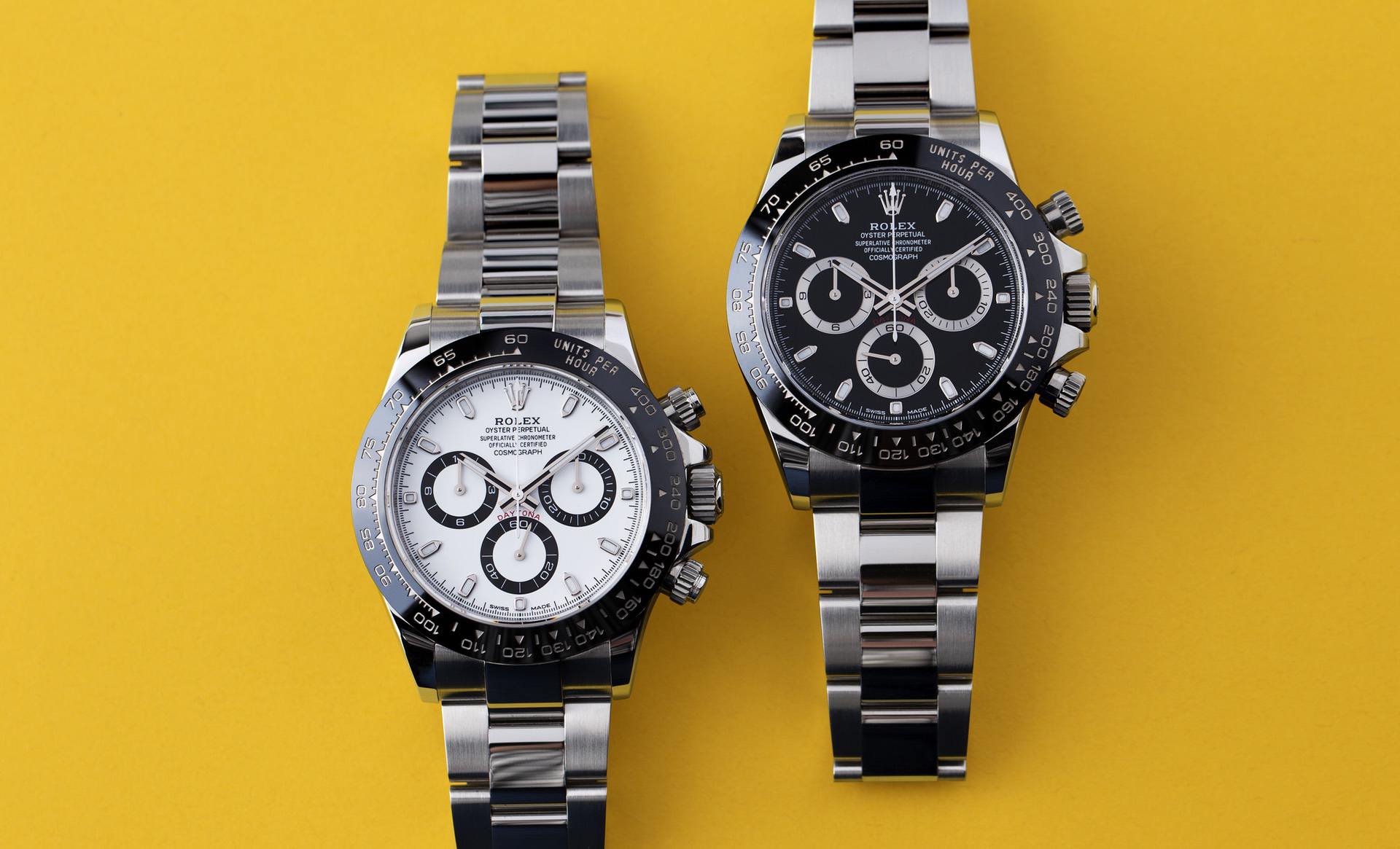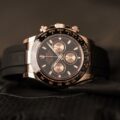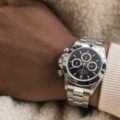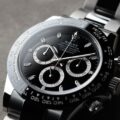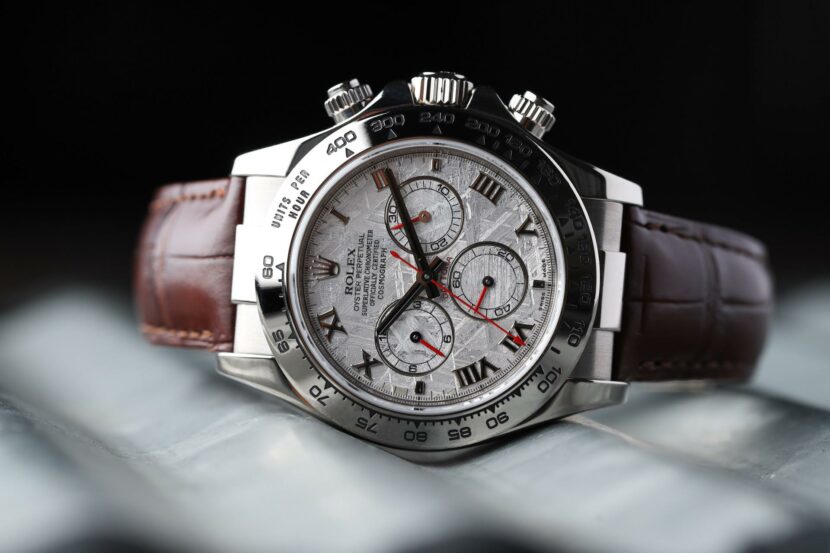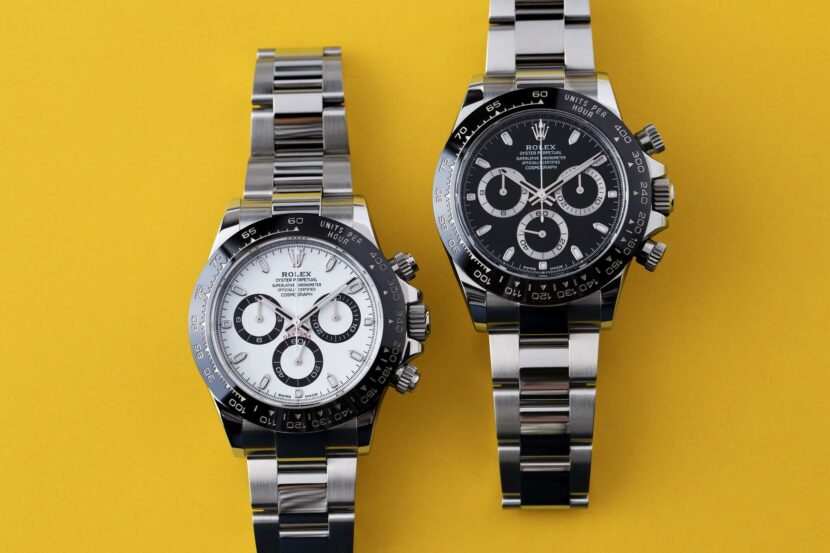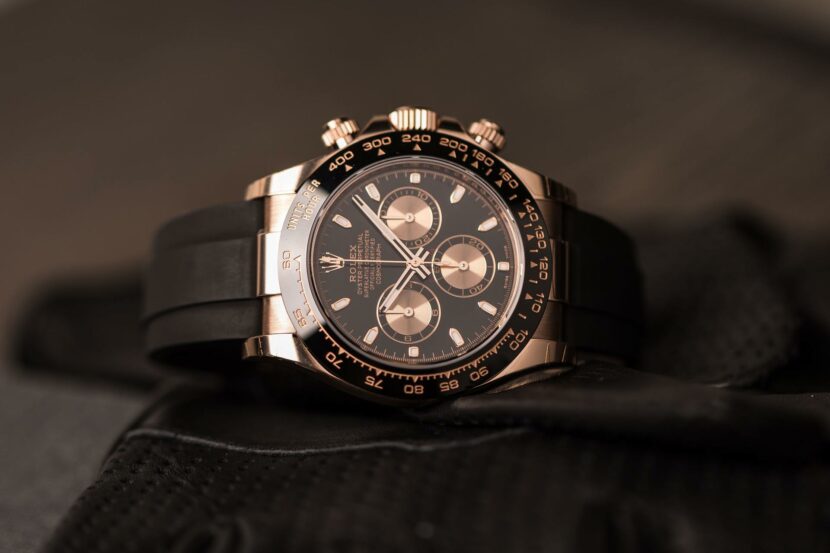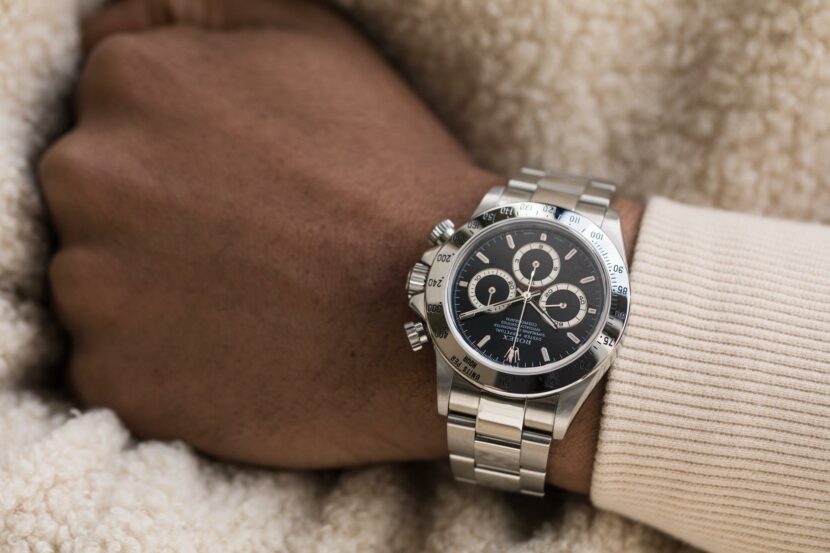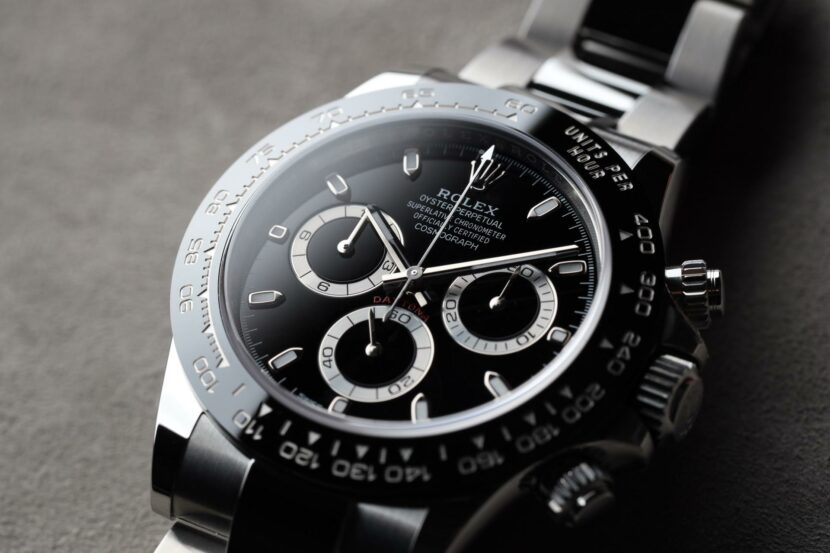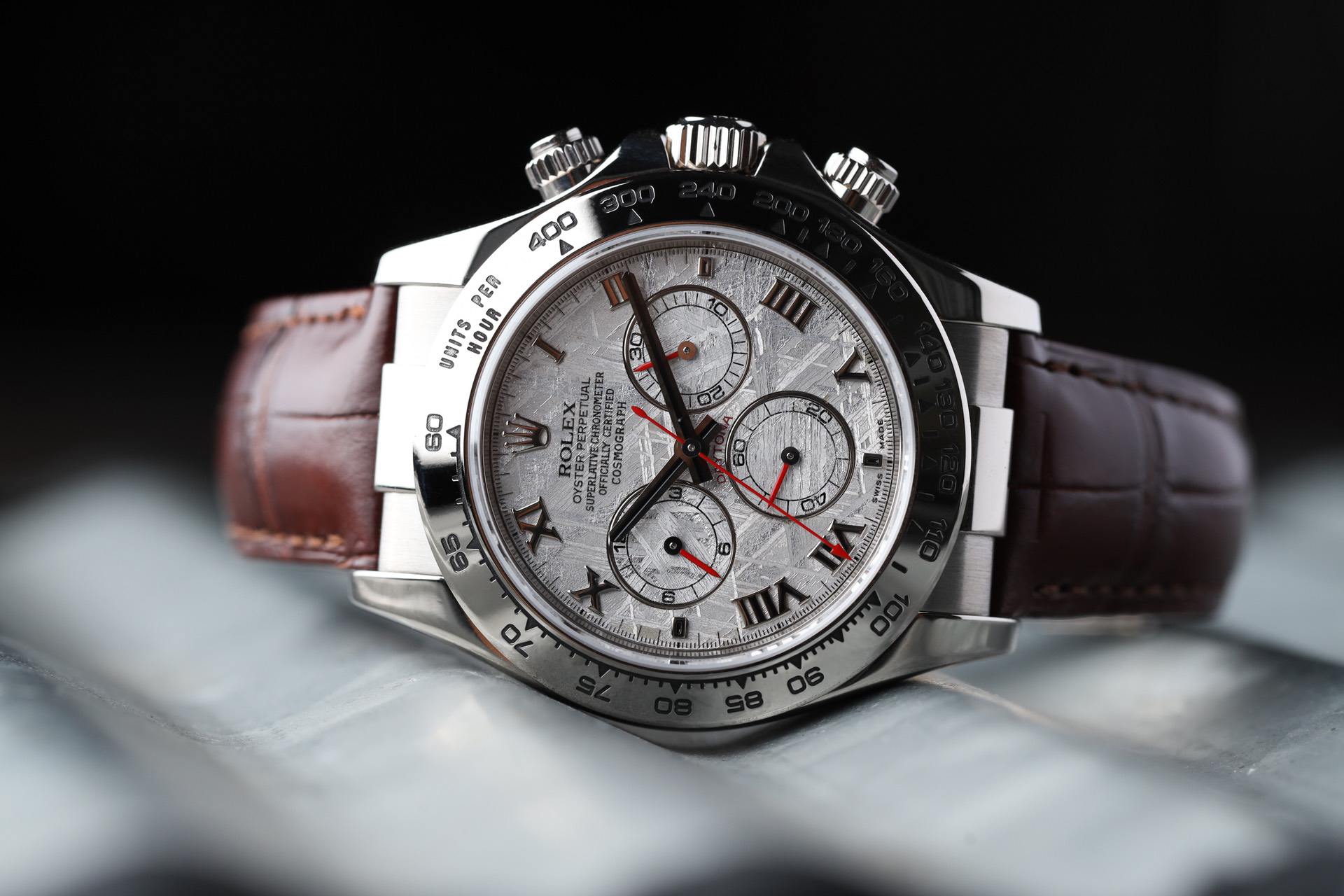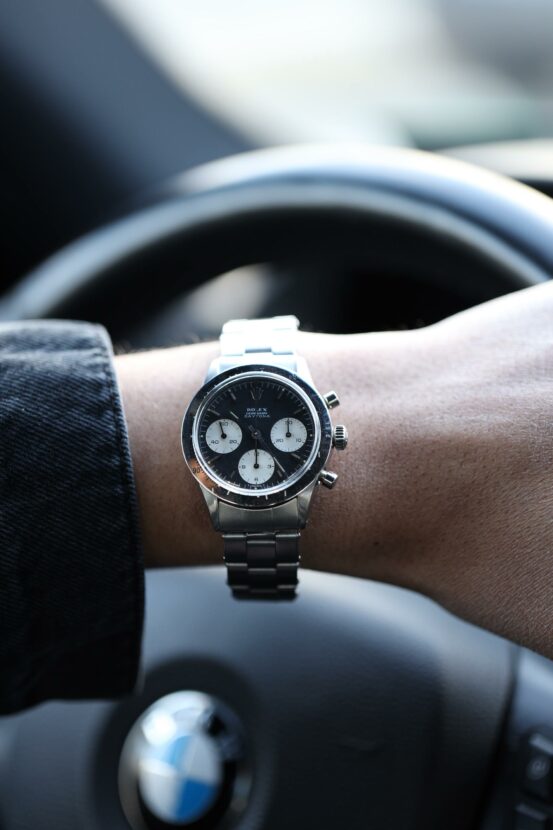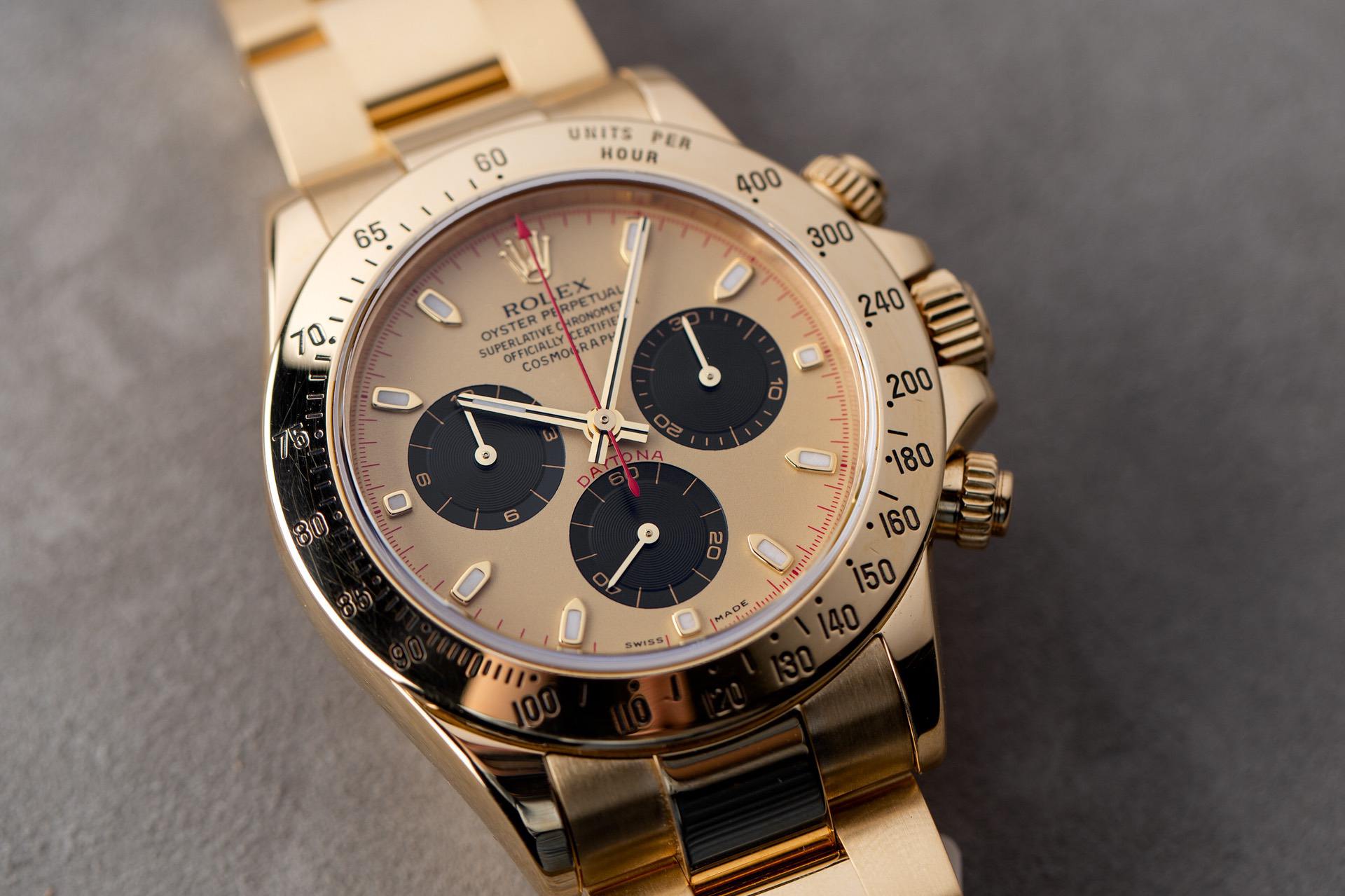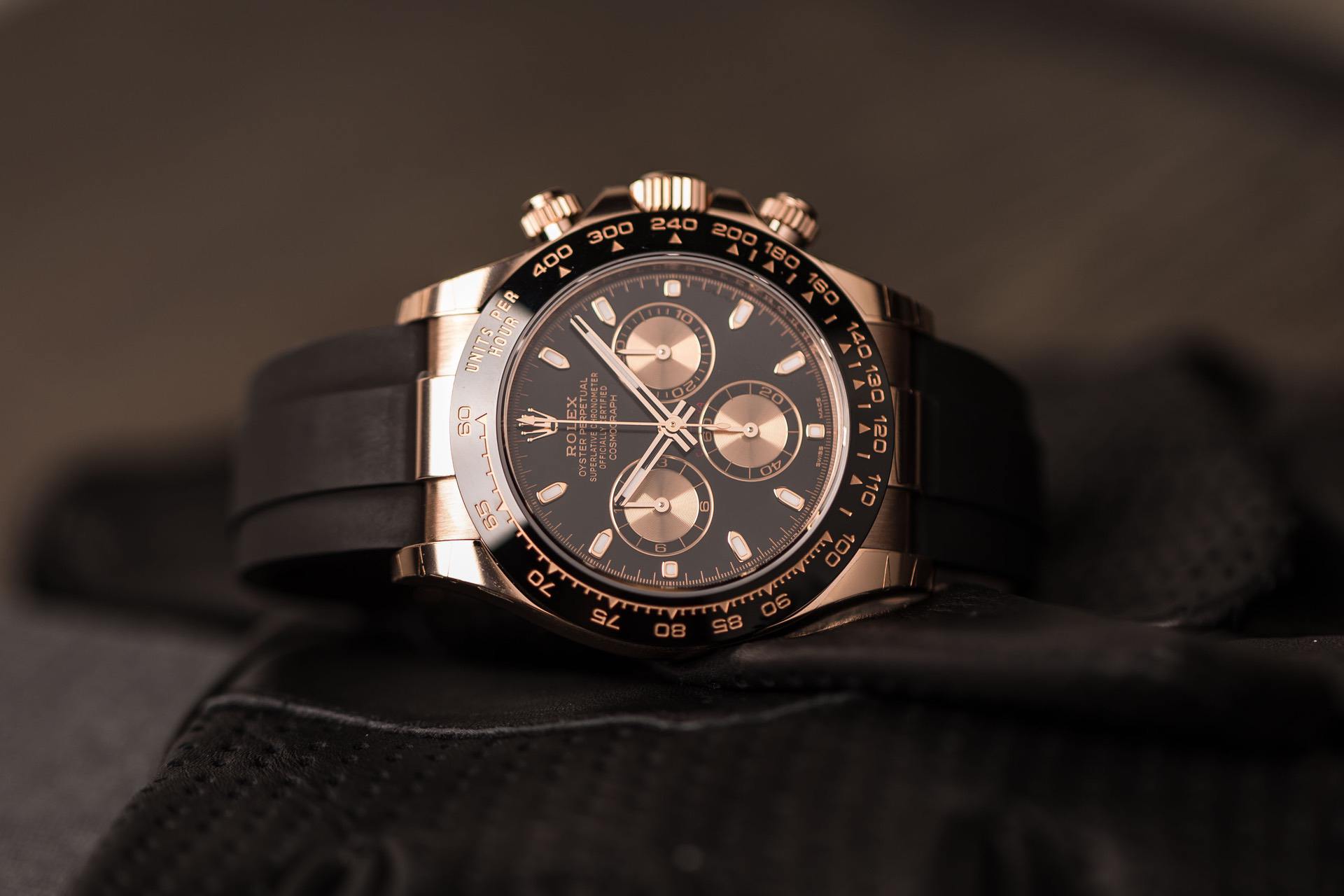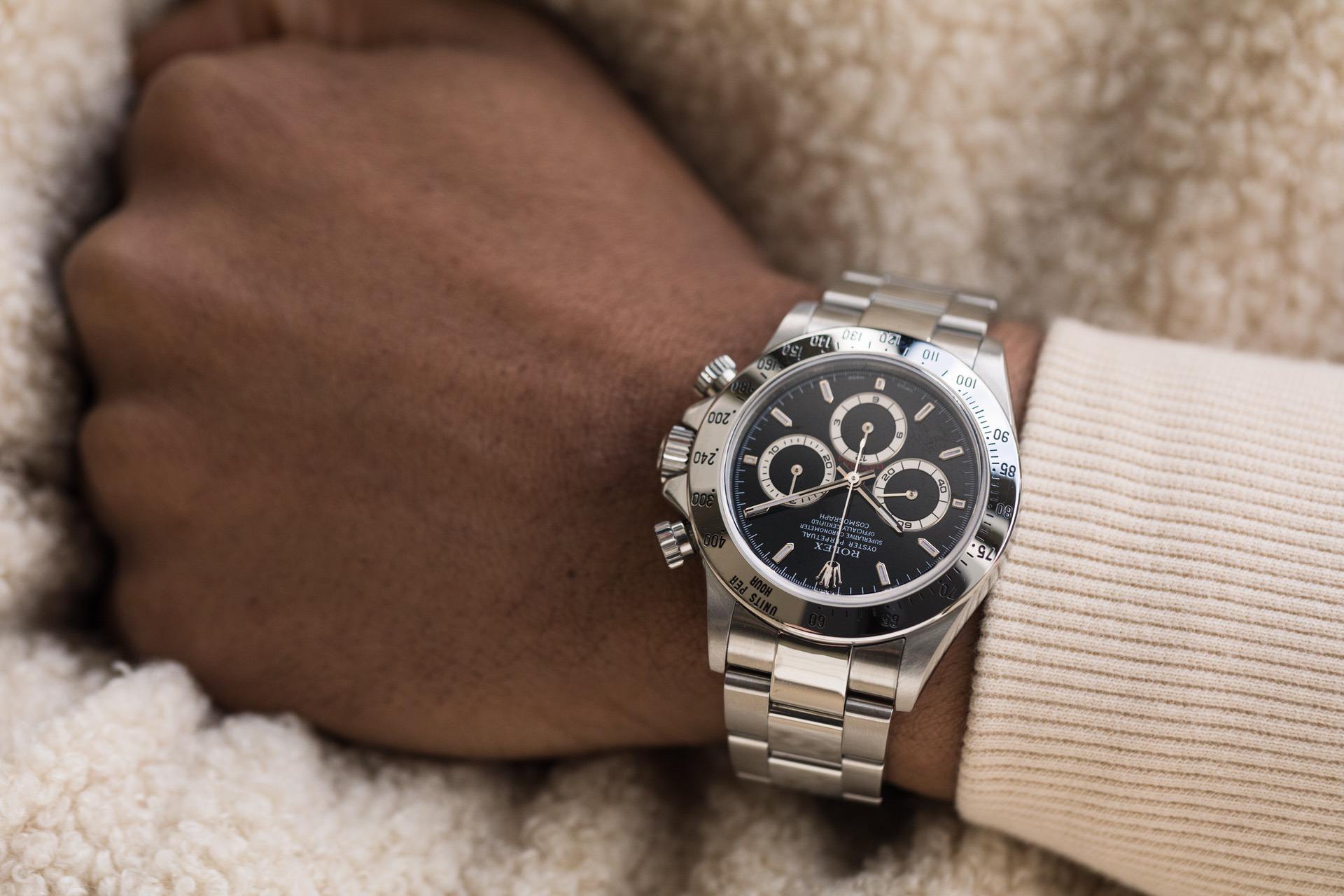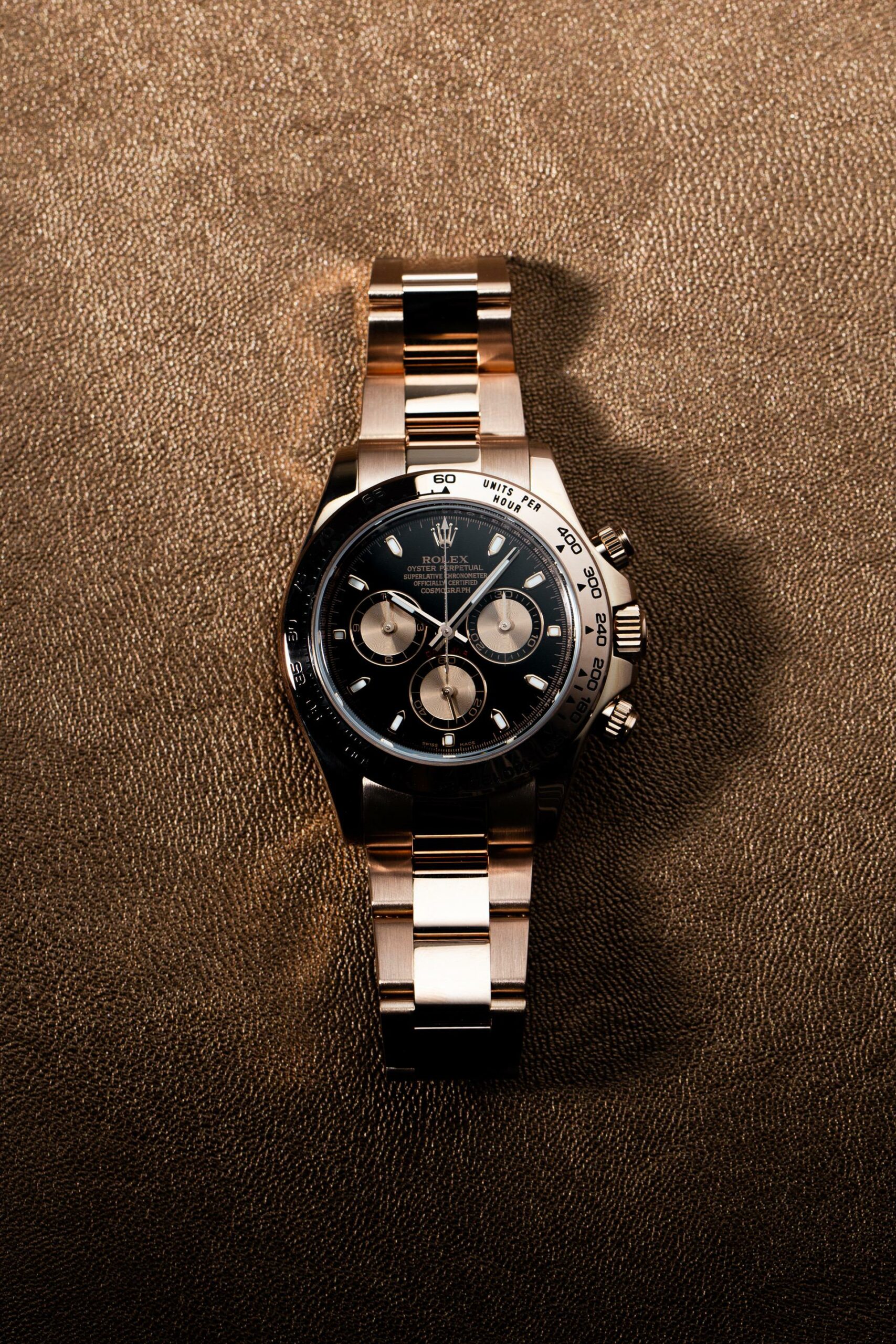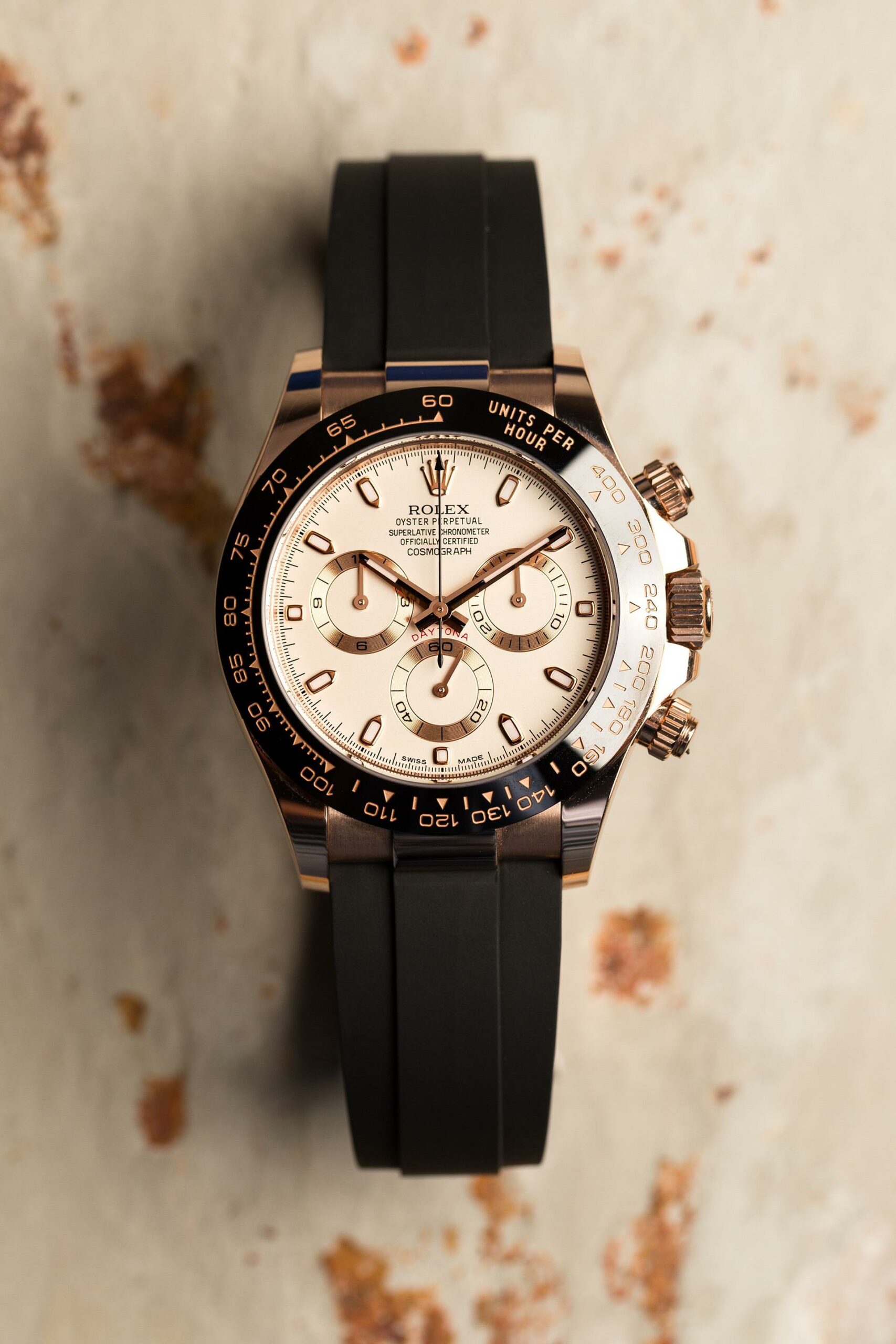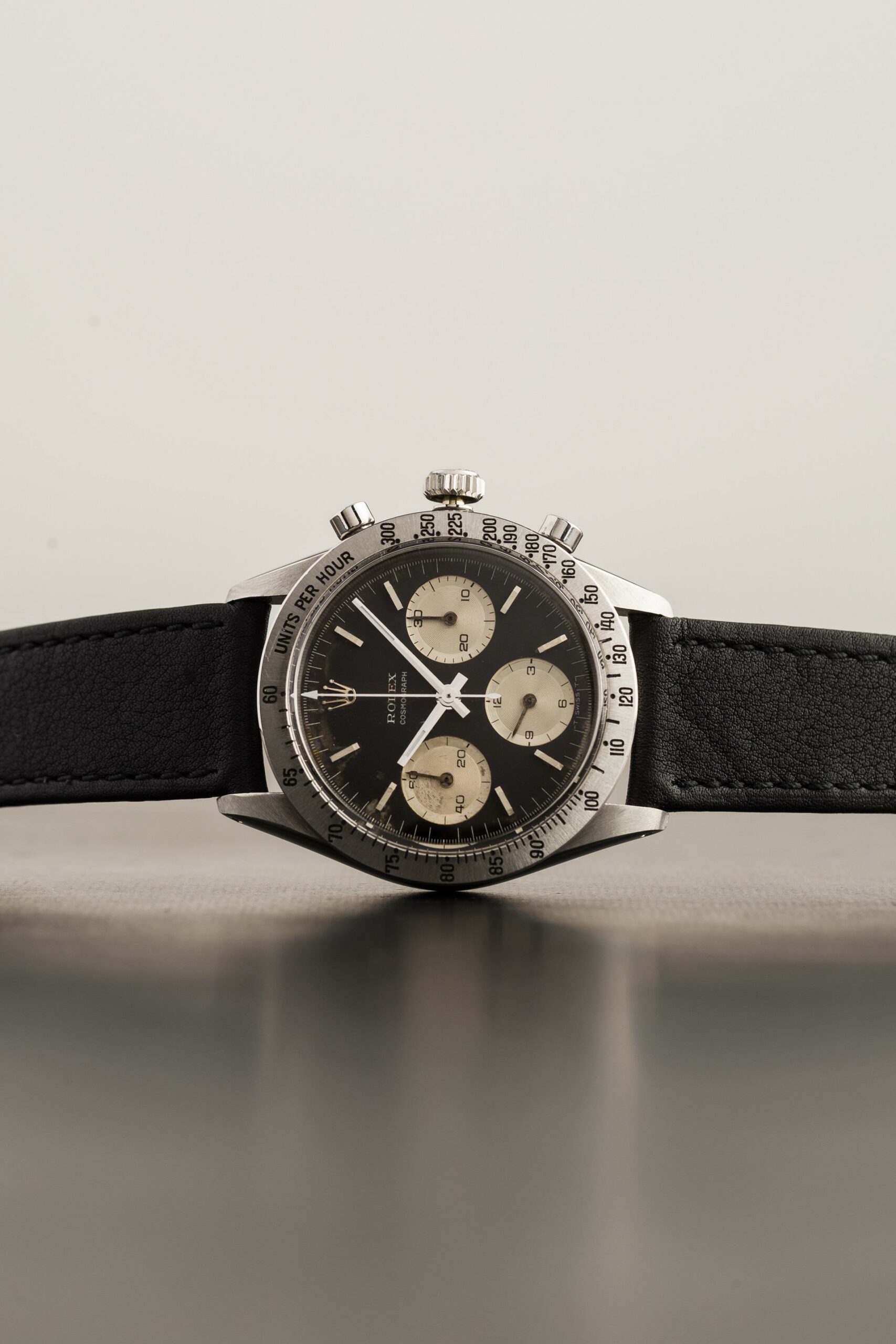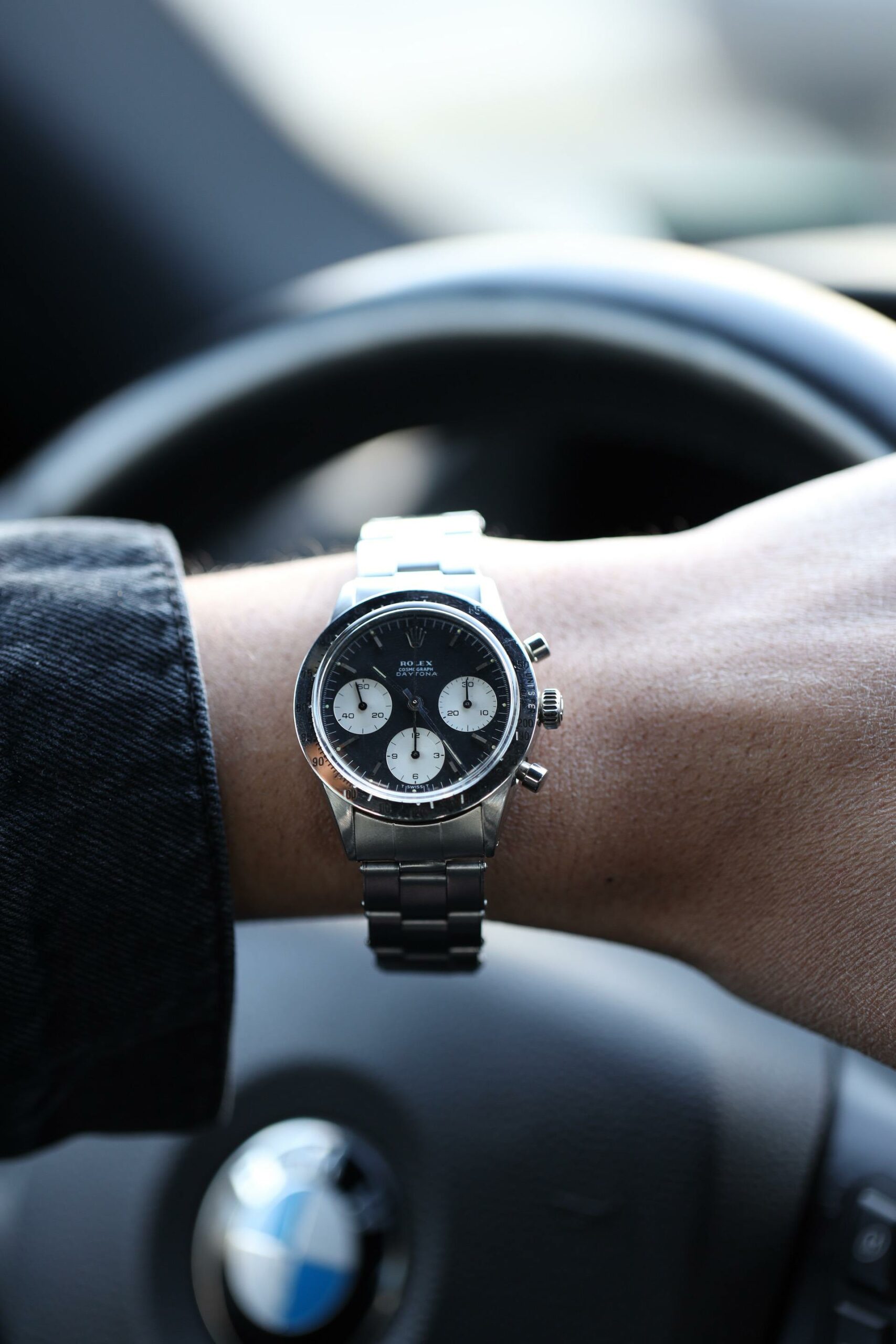As the iconic Rolex 24 at Daytona race is about to kick-off once again, we wanted to take you down the memory lane of the equally iconic Rolex Daytona watch. Its history goes as far back as 1963 when it launched to compete with Omega’s Speedmaster.
Go to any major car show; an official auto show, Cars and Coffee or even the Pebble Beach Concours; and you’re going to see countless Rolex Daytonas adorning the wrists of well-to-do car enthusiasts. For many car enthusiasts, even those that can afford hyper expensive, uber-luxury timepieces, the Rolex Daytona is a must-have. The reason for its prominence among enthusiasts is entirely to do with its motorsport history.
The Pre-Daytona Watch
The first true Rolex Daytona debuted in 1963, however, the ref. 4500 from the 1940s, now nicknamed “Pre-Daytona”, was the brand’s first motorsport-related chronograph and was even worn by the likes of Enzo Ferrari. After twenty years of evolution, Rolex finally replaced the ref. 4500 with the first Daytona, in 1963. It was launched with a hand-wound Valjoux 72 movement and sported the now-iconic three-dial chronograph design, stick hour/minute hands and an arrow second hand.
Its Name Was Originally Rolex Le Mans
After the success of the ref. 4500 with racing drivers, Rolex made the Daytona with them specifically in mind. It was designed as a chronograph for racing drivers and enthusiasts and its name was even motorsport-inspired, being named after the iconic Daytona International Speedway. The name was actually originally going to be the Rolex Le Mans but the brand’s desire to sell more pieces to Americans pushed the brand to use Daytona instead. Although, the name technically wasn’t given until 1964, though the ’63 is still considered by many to be a Daytona, as it began the reference number.
What was interesting about the first Rolex Daytona, back in its day, was the fact that it changed quite a bit from the ref. 4500 that it replaced. Gone were the monochromatic subdials, with inverse-colored subdials in their place. The tachymeter around the face of the 4500 was moved to the bezel of the Daytona and was also adorned with hash marks. The dial came in either black with white subdials or white (more of a cream-ish) with black subdials. The latter of which is among the prettiest Daytonas of all time. Unfortunately, it the first series Rolex Daytona wasn’t as immediately well received as its predecessor.
When the Daytona first arrived, it was actually met with a lukewarm reception. It’s hard to imagine now, as it’s become immensely popular, but back in the ’60s the original Daytona was a bit of a dud. It wasn’t until film and racing icon Paul Newman began wearing one that it became so popular but that didn’t happen until 1983, twenty years after its initial release.


